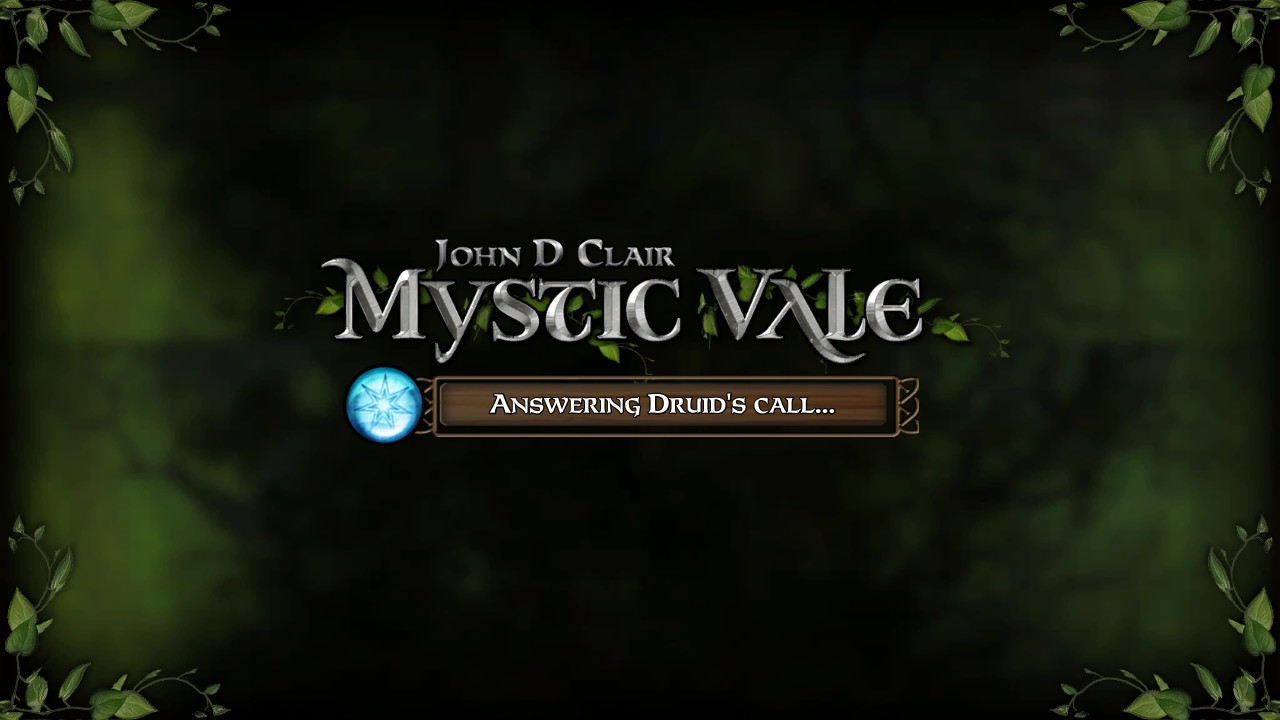Mystic Vale
Nintendo Switch
Developed By: Nomad Games
Published By: Nomad Games
Category: Board Game, Multiplayer, Strategy
Release Date: 03.12.20
My gaming experiences tend to stay within the bounds of the virtual realm, so I’m not overly familiar with deck building games. I’ve played a few games of Dominion with some friends who are bigger tabletop players than I am, but that’s pretty much the extent of things for me. Mystic Vale for the Nintendo Switch is a digitized adaptation of a physical deck-building game that hinges on a unique mechanic wherein players are able to customize the cards in their deck as the game progresses. It highlights everything that’s great about physical board games, while also highlighting the one thing I really can’t stand about board or card games.
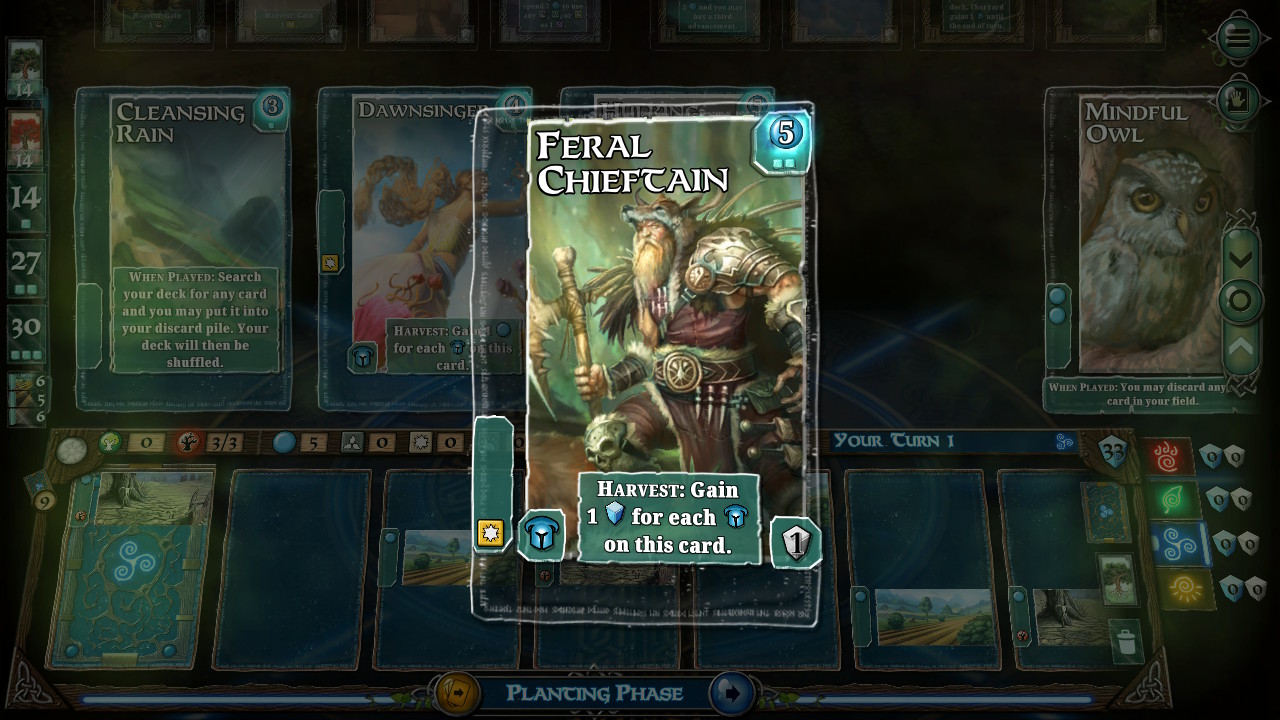
High Fantasy, High Art
The premise of the game is that players are a member of one of four different factions vying for control of the Mystic Vale, the setting of Mystic Vale. And that’s the story; it’s a deck-building game, so that’s really all you can expect. The good news about the setting is that it provides for some strikingly beautiful fantasy art. Whether the card is depicting one of the game’s magical creatures or even a simple meadow, the art is top notch. The quality of the illustrations is on par with anything offered by other fantasy card games. The only real issue with the art is the limited number of cards; since everyone plays using the same cards, the visuals can get a little too familiar after a while. There are three expansions you can buy as DLC with new cards (and therefore new art, obviously) and new mechanics, but the base game still looks good overall.
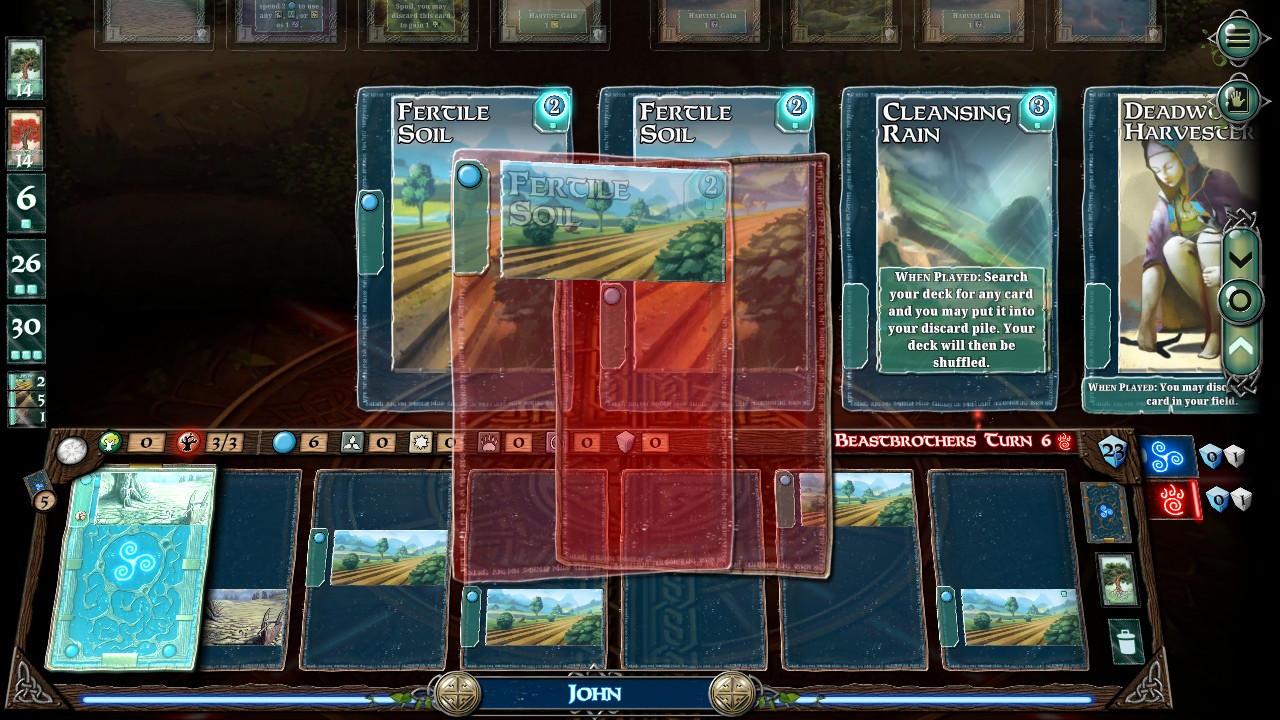
Learn By Doing
The first thing I did when I booted up Mystic Vale was load the tutorial. When I finished, I wasn’t sure how well I knew how to play the game. Some things I grasped pretty clearly, but big info dumps are not the right way to learn this game – for me, anyway. I had to play a few rounds to shake out all the questions that arose after the tutorial, but once I experienced the game in action things came into focus pretty clearly. I’d still recommend that anyone starting out go through the tutorial, but don’t worry if you’re not clear on some things; once you’ve gone through a round or two you’ll get the hang of things. I’d also recommend playing a round or two against a single opponent before jumping into the maximum four players; the games are shorter, but your turn comes sooner which makes experimentation more expedient.
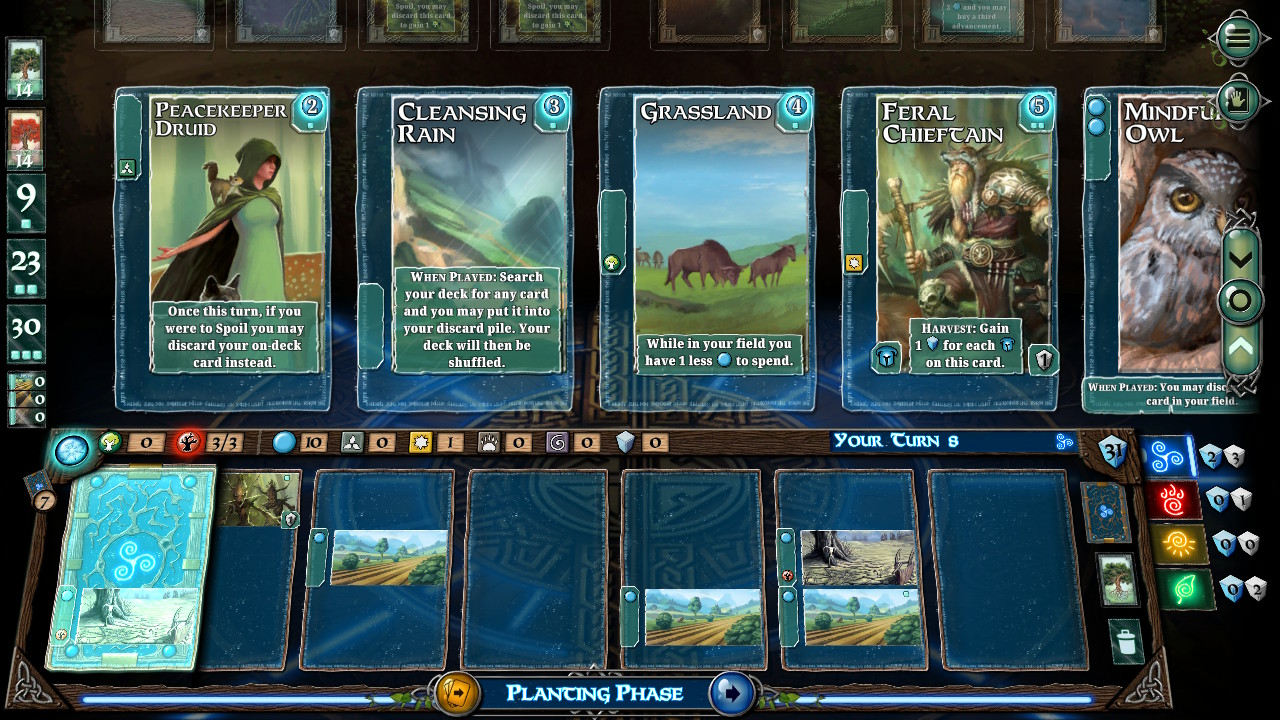
Draw and Plant
The first action for every turn is to draw cards to fill your field; this process is carried out automatically after the end of your previous turn. You draw cards and place them in your field until you have three decay tokens showing; the twist is that the top card of your deck is always visible, so the third token is always from a card that is still technically in your deck, not on the field, so you can’t automatically use any of its benefits that turn.
That brings you to the Planting Phase, which is an entirely optional risk you can choose to take. If you choose to plant, you can draw the top card on your deck. If the card under that has no decay token, you’re golden. If it does have a decay token, then your field is spoiled and your turn ends right then and there. You do, however, get one additional energy token to spend in your Harvest Phase the next turn (more on that in the next section). It’s an interesting mechanic that can help you brute force your way to an advantage, but it can be a coin flip as to whether it will help you or hurt you, which I think is the point.
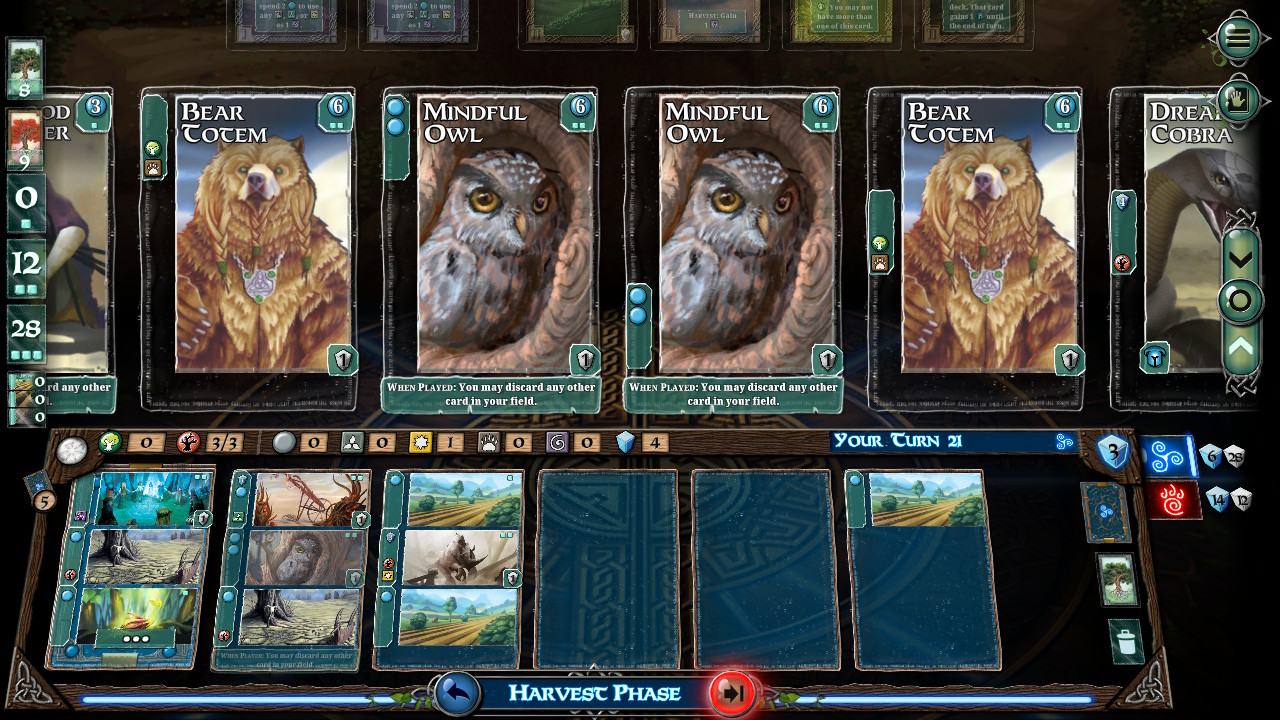
Harvest Time
At the start of the Harvest Phase, you gather all of the resources provided by the cards in your field. Some cards have a blue dot or two that can be spent on card upgrades. Any upgrades placed on a card stay on that card for the rest of the game; for instance, if you buy the standard meadow, your card will produce one extra blue dot for the rest of the game every time it hits your field. Your deck is only about twenty cards; after your turn is over, your entire field is discarded into your discard pile. Once you’ve cycled through your whole deck, the discard pile is shuffled and returned to your deck. Any upgrades you buy for your cards don’t take effect until the next time that card hits the field.
Some upgrades will supply you with elemental tokens which can be spent on vale cards. Unlike your field, your vale is permanent. Some vale cards provide permanent bonuses, like victory points, whereas some are one-use cards that provide a one-time boost. Other upgrades will directly supply you with victory points, reduce or negate a card’s decay token, allow you to discard a card from your field, or discard a card from your deck then shuffle the deck when you’re drawing your field for your next turn. This last ability works well with Planting; if you can see how many cards are left in your deck with a decay token, you know what your odds of spoiling are.
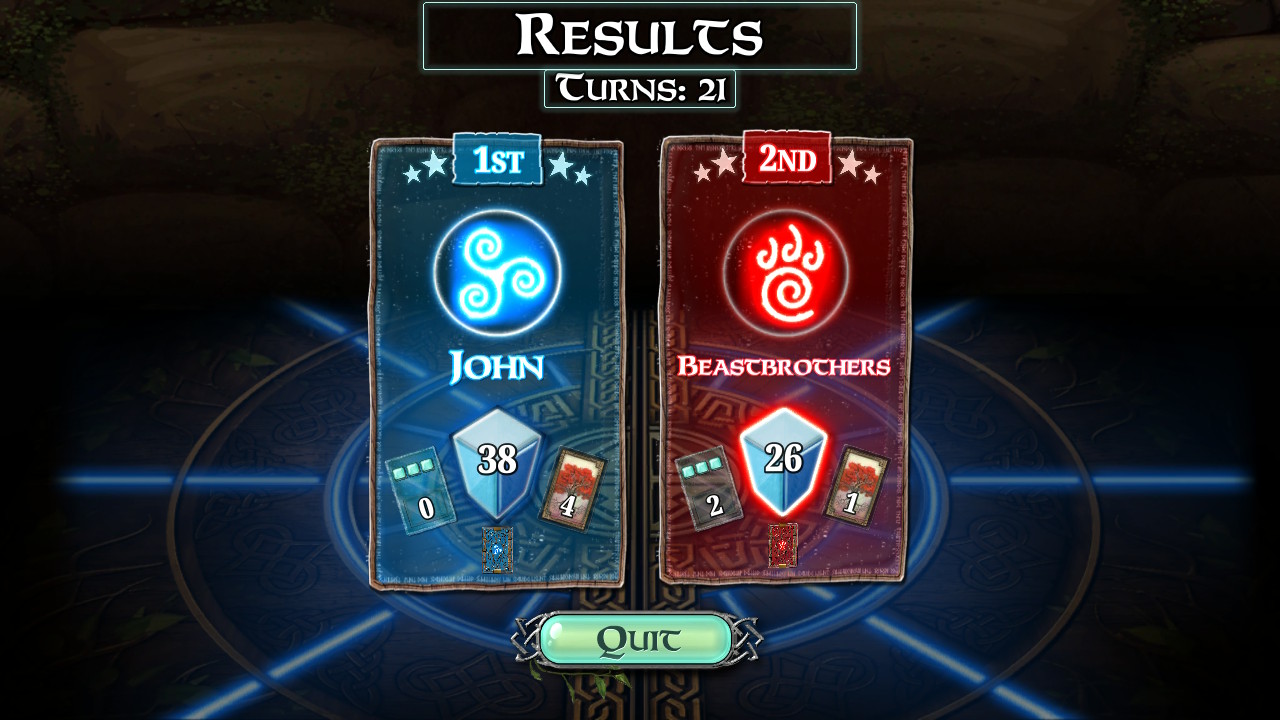
To Victory!
I mentioned victory points in the last section. As the name implies, you need victory points to win the game. You receive free victory points when you first purchase an upgrade that offers them, and then every time that card enters the field you gain a victory point from the victory point pool. The number of points in the pool depends on how many players are in the game, and once the pool hits zero the game is pretty much over – every player gets to have the same number of turns, however, so if you empty the pool on your fifteenth turn, the game doesn’t actually end until the rest of the players all complete their fifteenth turn. The game then adds every player’s victory points to their free points, and the player with the highest point total wins.
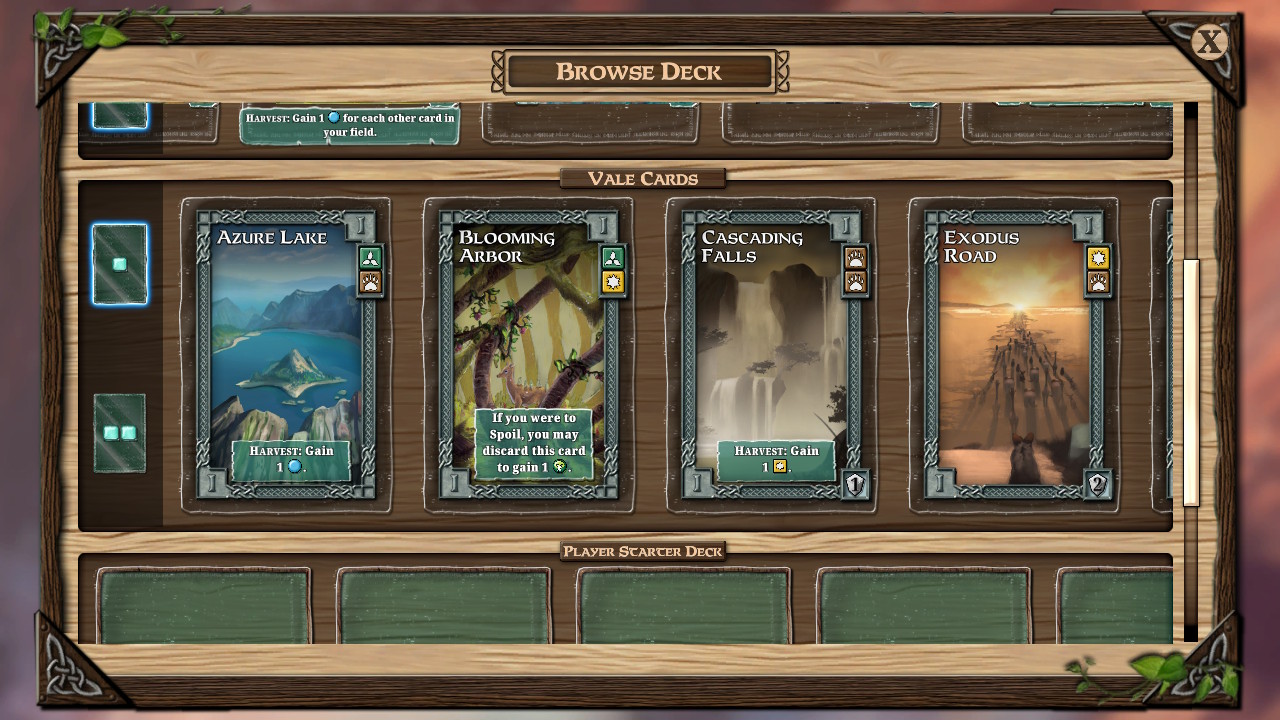
Leave It To Chance – Not Like You Have A Choice
As a board game played with friends, Mystic Vale is a lot of fun! The game supports up to four players, either on your couch or via the internet. Like a lot of board games, half the fun is having an excuse to hang out with people you like and do something together. As a single-player experience – you can play against bots if you want – it is somewhat lacking for the same reason I don’t really like board games very much to begin with – random chance can all too frequently render skill irrelevant. At a certain point, the game is entirely at the mercy of what cards are drawn. I mean, you can customize those cards to hopefully give yourself an advantage, but you’re still at the mercy of the deck as to whether you can even get into position to buy the right upgrades to begin with. I like to feel like my skills and preparation have a direct impact on the outcome of a game I’m playing; with a game like this, even if you make all the best choices available to you, it won’t mean anything if your opponent has better choices.
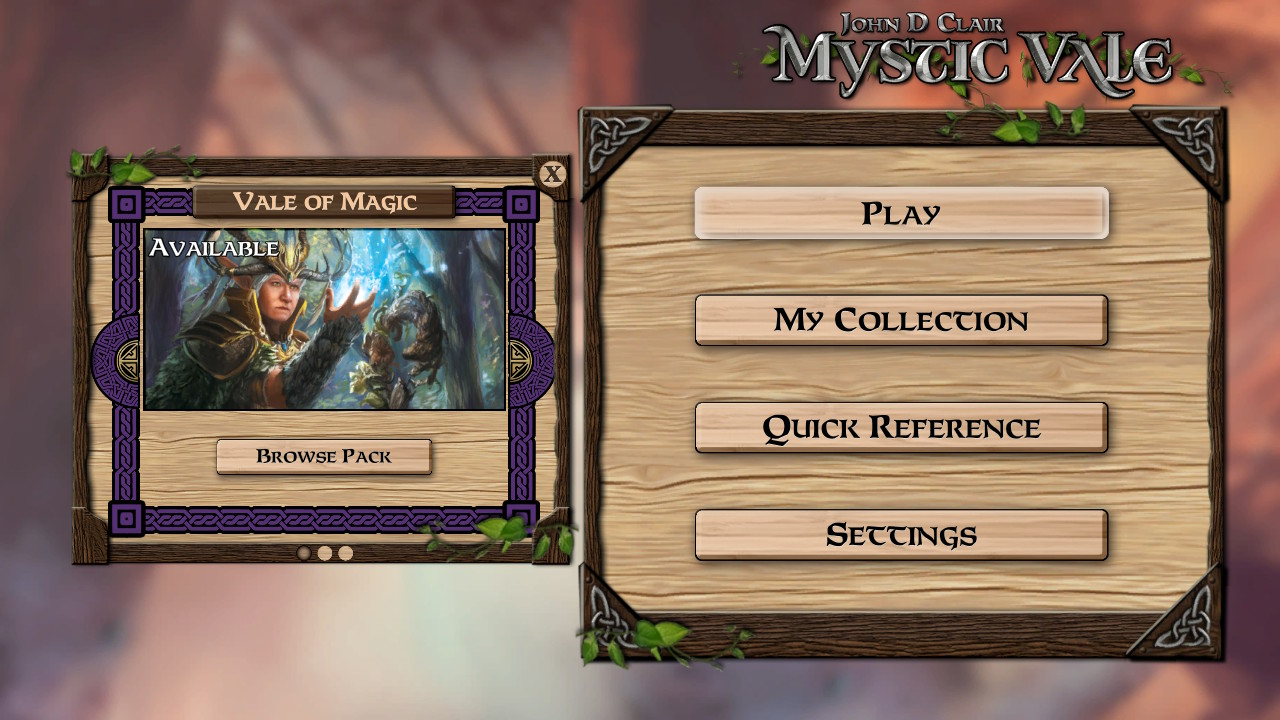
Visit The Vale With a Group
If, unlike me, you can ignore the fact that games like Mystic Vale heavily rely on randomness for their core mechanics, then there’s really not much fault to find here. The idea of upgrading your cards as the game goes along is intriguing, and when you finally hit the combo you’ve been planning for it’s a great feeling. As it was designed as a board game first, it’s quite a bit more fun to play against your friends or family, but practicing with bots isn’t necessarily bad – it’s just not as fulfilling as having a group to play with. If you’re looking for a new game night activity, Mystic Vale should be just what you’re looking for.





Mystic Vale
$21.99
Follow Nomad Games
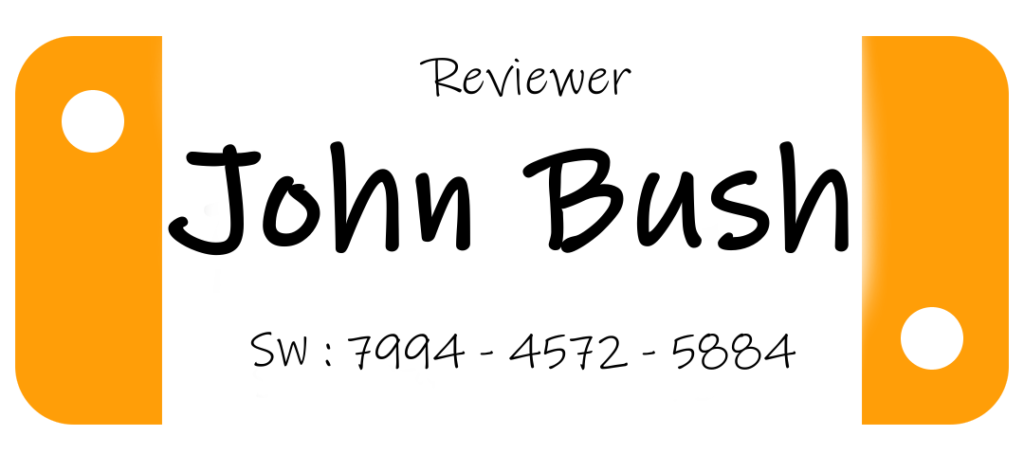
*A game code was provided for review purposes.
[Review] KONOSUBA – God’s Blessing on this Wonderful World! Love For These Clothes Of Desire! – Nintendo Switch

Developed By: MAGES. Inc. Published By: PQube Categories: Visual Novel…

